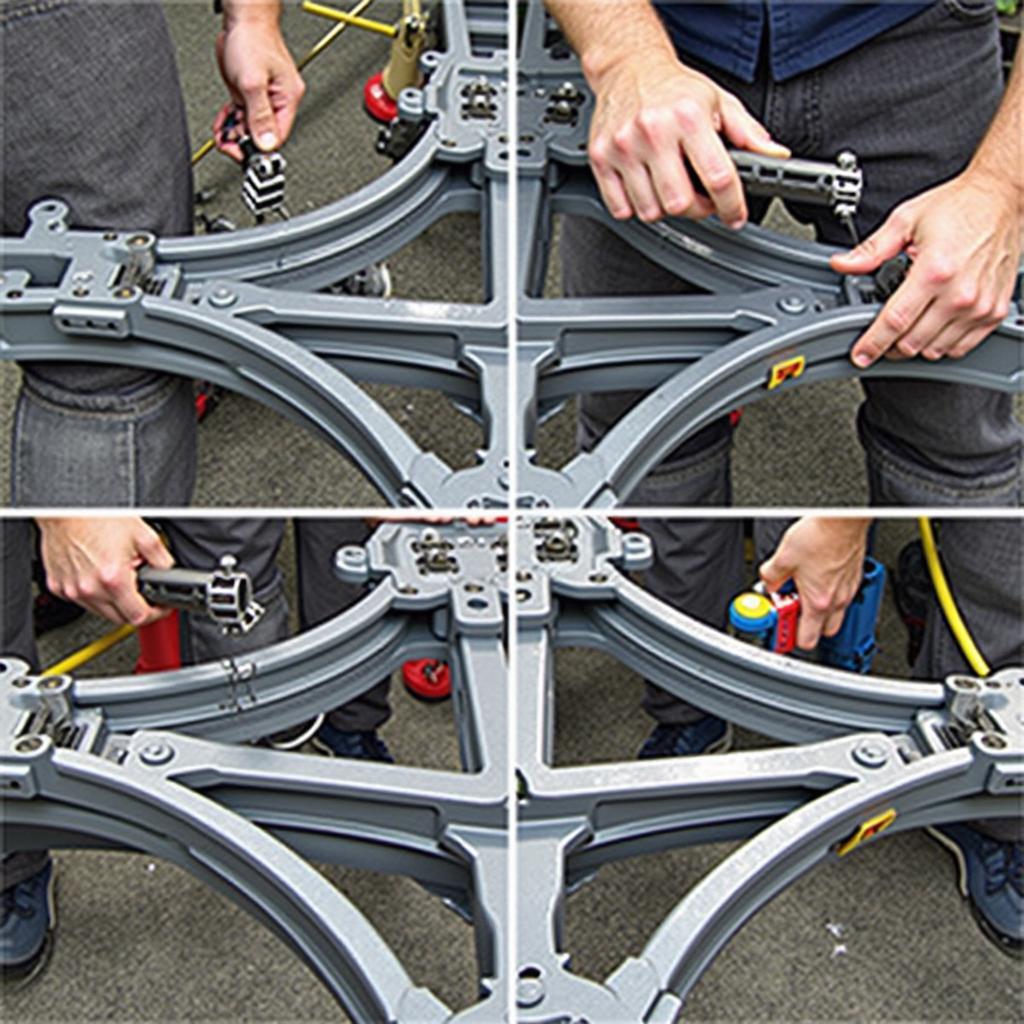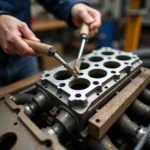Crossmembers in cars play a crucial role in the vehicle’s stability and safety. They are part of the chassis and help to distribute the forces acting on the car evenly while driving. In this article, you will learn everything you need to know about crossmembers in cars, from their function and importance to repair and replacement. We will also address frequently asked questions and give you valuable maintenance tips.
The crossmember, also known as a traverse, connects various chassis components and provides the necessary rigidity. It helps to maintain the body shape and minimize twisting. This improves handling and increases safety in the event of an accident. Imagine driving at high speed over an uneven road. Without stable crossmembers, the body would bend significantly, negatively affecting handling. Dr. Klaus Müller, author of “Fahrwerktechnik im Detail” (Chassis Technology in Detail), emphasizes the importance of crossmembers: “An intact crossmember is essential for safe and comfortable driving.”
What Exactly are Car Crossmembers?
Crossmembers are usually made of steel or aluminum and are mostly located in the front and rear end of the vehicle. They serve as a connecting element between the longitudinal members and contribute to the stabilization of the body. They can also serve as mounting points for various components such as the engine, transmission, or suspension. There are different types of crossmembers, depending on the vehicle model and application. Used aluminum crossmembers can be a cost-effective alternative when replacing them.
Why are Crossmembers so Important?
The proper function of the crossmembers is essential for driving safety. Damaged crossmembers can lead to unstable handling and endanger the safety of the occupants. In the event of an accident, damaged crossmembers can compromise the vehicle’s crumple zone and thus worsen the consequences of the impact. Regular checks and, if necessary, replacement of the crossmembers are therefore essential.
Repair and Replacement of Crossmembers
The repair or replacement of crossmembers should be carried out by a qualified workshop. Depending on the type and extent of the damage, a repair may be possible. In some cases, however, a complete replacement of the crossmember is necessary. It is important to use original parts or high-quality spare parts. Used aluminum crossmembers can be an option, but pay attention to the quality and origin.
Frequently Asked Questions About Car Crossmembers
- How do I recognize a damaged crossmember? Signs of a damaged crossmember can be unusual noises while driving, unstable handling, or visible damage to the crossmember itself.
- How often should crossmembers be checked? It is recommended to have the crossmembers checked as part of the regular vehicle inspection.
- How much does it cost to replace a crossmember? The costs for replacing a crossmember vary depending on the vehicle model and labor involved.
 Car Crossmember Maintenance and Care
Car Crossmember Maintenance and Care
Car Crossmembers: Conclusion
Crossmembers are an important component of the chassis and contribute significantly to the safety and stability of your car. Regular checks and professional repair or replacement of damaged crossmembers are essential. If you have any questions on this topic or need support, please do not hesitate to contact us. Our experts at AutoRepairAid are happy to help you with advice and assistance. You can reach us via WhatsApp at + 1 (641) 206-8880 or by email at [email protected].
More Interesting Topics About Cars
- Chassis Diagnostics
- Brake Systems
- Engine Repair
We hope this article has helped you to better understand the importance of crossmembers in cars. Feel free to share this article with other drivers and leave us a comment if you have any further questions.

